Homemade Butter Biscuits Recipe: Golden, Flaky Comfort
Butter biscuits embody the soul of home-cooked comfort with their irresistible golden exterior and tender interior.
Rich with simple ingredients, these delectable treats enhance ordinary moments into memorable culinary experiences.
Generations have cherished their delicate, flaky texture that melts effortlessly on your tongue.
Kitchen memories often center around these warm, inviting pastries that connect us to traditional baking techniques.
Precision matters when creating their signature light and airy structure, where each ingredient plays a critical role.
Soft, buttery layers promise a sensory journey that transcends mere sustenance.
Prepare to elevate your meal with a baking adventure that celebrates rustic simplicity.
Why Butter Biscuits Are a Must-Try
What You Need for Buttery Homemade Biscuits
Dry Ingredients:Fat and Liquid Ingredients:Optional Toppings:How to Bake Fluffy Butter Biscuits
Step 1: Prepare Your Baking Station
Preheat the oven to 425°F. Line a baking sheet with parchment paper for hassle-free cleanup.
Step 2: Mix Dry Ingredients
In a large bowl, combine:Whisk ingredients until thoroughly blended.
Step 3: Create Crumbly Texture
Cut cold cubed butter into dry ingredients using a pastry cutter or two knives. Mix until the mixture looks like coarse crumbs with small pea-sized butter bits.
Step 4: Add Liquid Ingredient
Slowly pour cold milk or buttermilk into the mixture. Stir gently with a fork until just combined. Avoid overmixing to maintain biscuit tenderness.
Step 5: Knead and Shape Dough
Lightly flour a clean surface. Transfer dough and softly knead by folding over itself 3 times. Pat or roll dough to approximately 1 inch thickness.
Step 6: Cut Biscuit Shapes
Use a 2.5-inch biscuit cutter or round glass. Cut biscuits without twisting to ensure even rising. Gather remaining dough scraps for additional biscuits.
Step 7: Bake to Golden Perfection
Arrange biscuits on prepared baking sheet, leaving 1 inch between each. Bake for 12-15 minutes until tops turn golden brown and centers are fully cooked.
Step 8: Serve and Enjoy
Remove from oven and let cool slightly. Serve warm with butter, honey, jam, or your favorite topping.
Baking Know-How for Biscuit Perfection
Keeping Butter Biscuits Fresh and Warm
Great Matches for Your Butter Biscuits
Different Takes on Classic Butter Biscuits
Print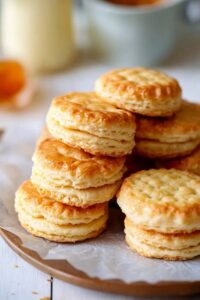
Butter Biscuits Recipe
- Total Time: 25 minutes
- Yield: 8 1x
Description
Delicate French butter biscuits melt on your palate with rich, buttery elegance. Crisp edges and delightful simplicity make these classic cookies a perfect companion for afternoon tea or quiet moments of sweet indulgence.
Ingredients
Butter Biscuits
Dry Ingredients:
- 2 cups (480 milliliters) all-purpose flour
- 1 tablespoon (15 milliliters) granulated sugar
- 1 tablespoon (15 milliliters) baking powder
- 1 teaspoon (5 milliliters) salt
Fat:
- ½ cup (113 grams) unsalted butter (cold, diced into small pieces)
Liquid Ingredients:
- ½ cup (120 milliliters) cold milk (or buttermilk as a substitute)
Instructions
- Preheat the oven to 425°F (220°C) and line a baking sheet with parchment paper to ensure easy removal and prevent sticking.
- In a large mixing bowl, thoroughly combine all-purpose flour, baking powder, salt, and granulated sugar using a whisk to distribute ingredients evenly.
- Introduce cold, cubed butter into the dry mixture, using a pastry cutter or two parallel knives to break down the butter until the texture resembles rough, uneven crumbs with small pea-sized clusters.
- Gradually pour cold milk or buttermilk into the crumbly mixture, gently folding with a fork until the dough just comes together, taking care not to overwork the mixture to maintain a tender texture.
- Transfer the loose dough onto a lightly floured surface, using gentle hands to fold the mixture over itself three to four times, creating delicate layers without aggressive kneading.
- Carefully pat or roll the dough to approximately 1 inch (2.54 centimeters) thickness, ensuring an even surface for uniform biscuit cutting.
- Select a 2.5-inch (6.35 centimeters) biscuit cutter or round glass, pressing straight down without twisting to create clean-edged biscuits that will rise symmetrically.
- Arrange the cut biscuits on the prepared baking sheet, spacing them approximately 1 inch apart to allow for even heat circulation and proper rising.
- Place the baking sheet in the preheated oven and bake for 12-15 minutes, monitoring until the tops transform into a rich, golden-brown color and the interior feels fully cooked.
- Remove the baking sheet from the oven and let the biscuits rest for a few minutes, then serve warm with optional accompaniments like butter, honey, or jam.
Notes
- Cold butter is the secret weapon for creating flaky, melt-in-your-mouth texture in these classic biscuits.
- Gentle kneading prevents tough biscuits, so handle the dough with a light touch and minimal manipulation.
- Buttermilk can be swapped with regular milk, but adds extra tanginess and helps create a softer crumb.
- Biscuit height matters – aim for about an inch thick to ensure a perfect balance of crispy exterior and soft interior.
- Leftover biscuits can be stored in an airtight container for 2-3 days and quickly reheated in the oven for a fresh-baked taste.
- Room temperature ingredients will compromise the flakiness, so keep butter and milk ice-cold before mixing.
- Prep Time: 10 minutes
- Cook Time: 15 minutes
- Category: Breakfast, Snacks, Desserts
- Method: Baking
- Cuisine: American
Nutrition
- Serving Size: 8
- Calories: 210 kcal
- Sugar: 1.5 g
- Sodium: 200 mg
- Fat: 10 g
- Saturated Fat: 6 g
- Unsaturated Fat: 3.5 g
- Trans Fat: 0 g
- Carbohydrates: 28 g
- Fiber: 1 g
- Protein: 3 g
- Cholesterol: 30 mg

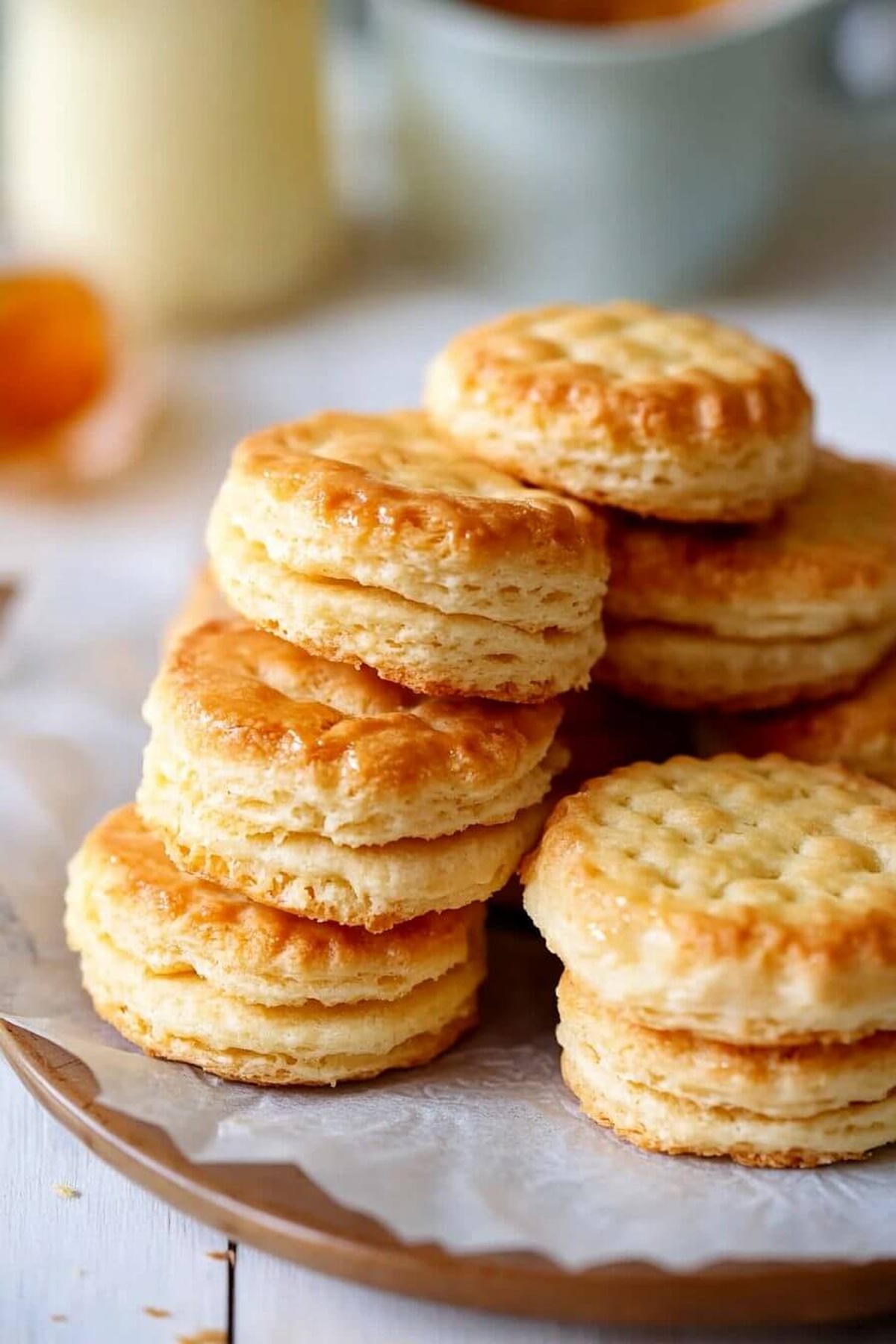
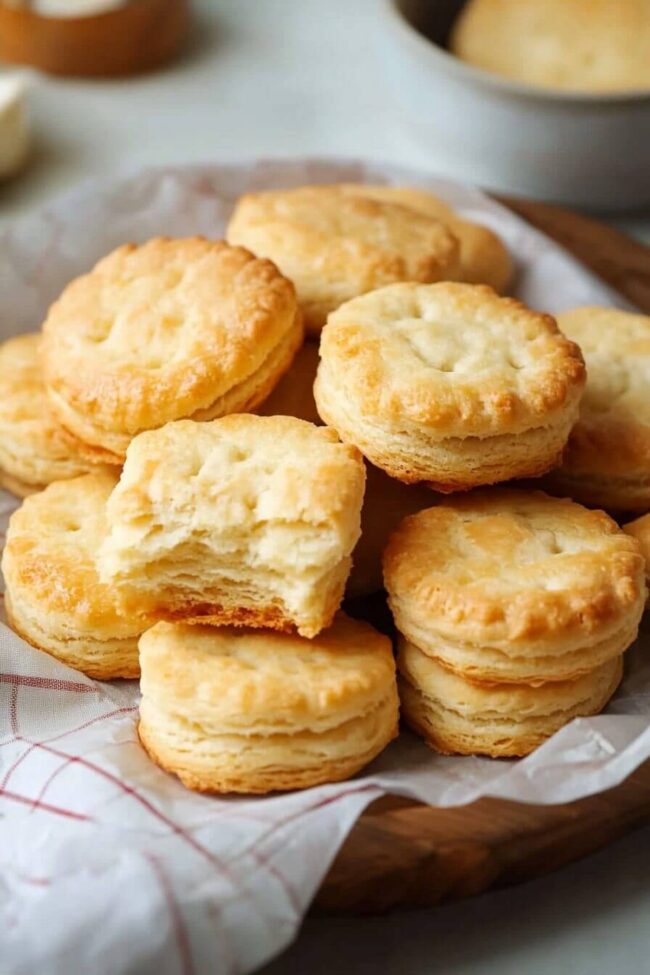
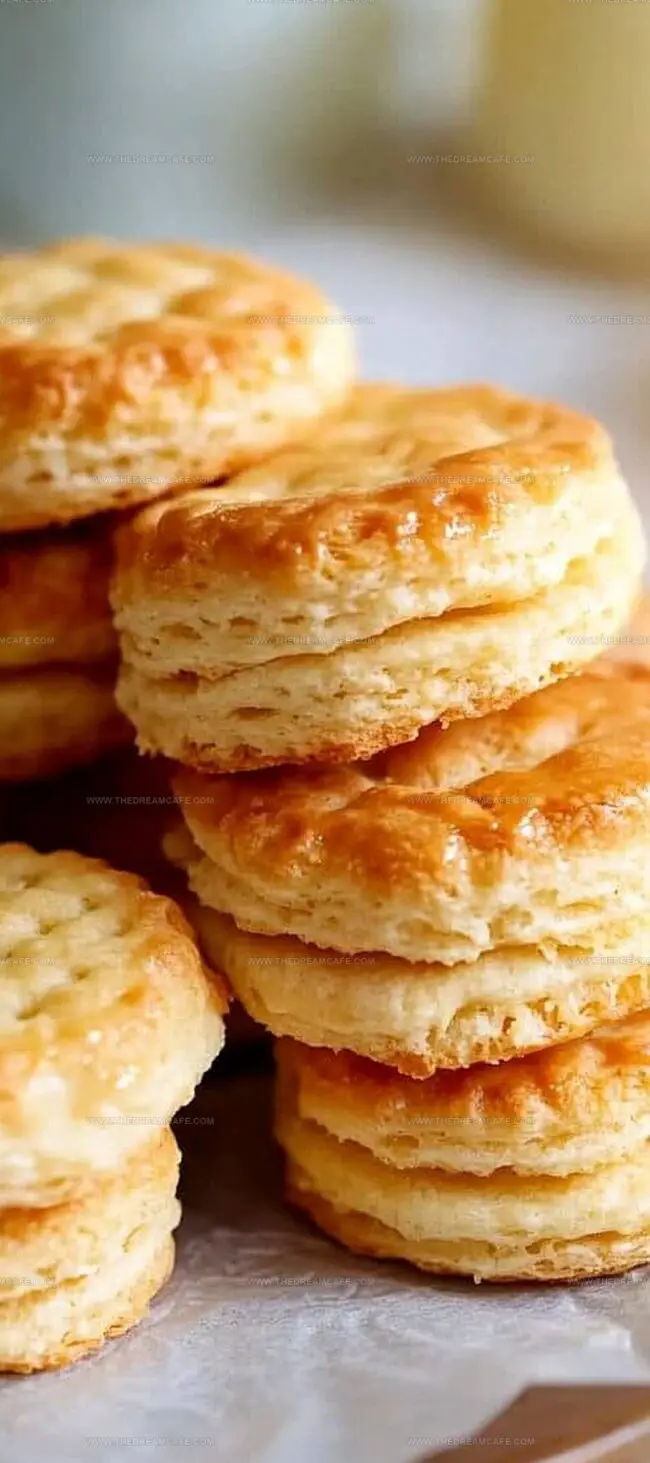
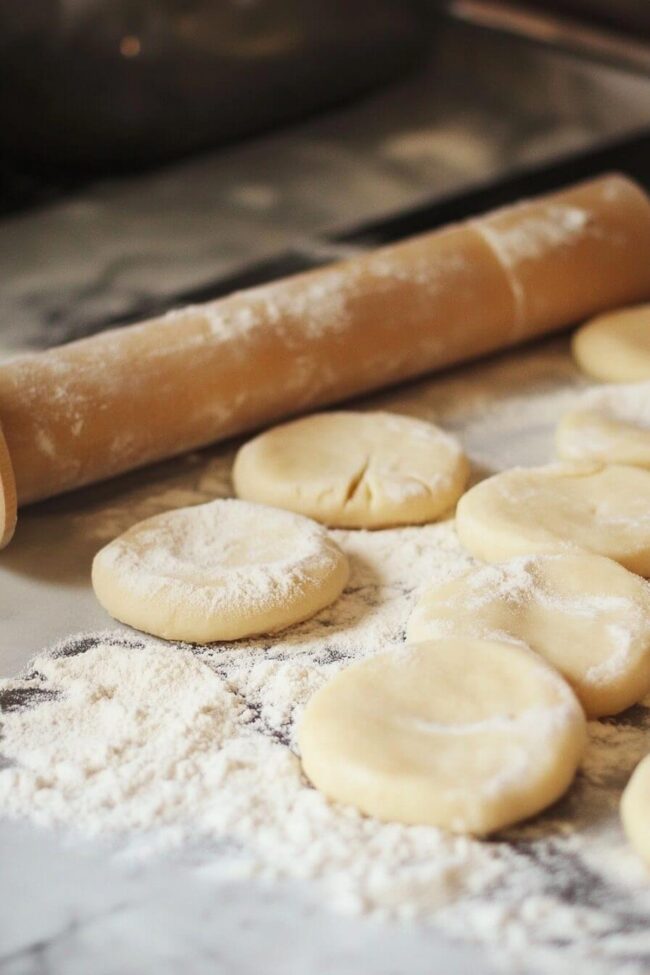
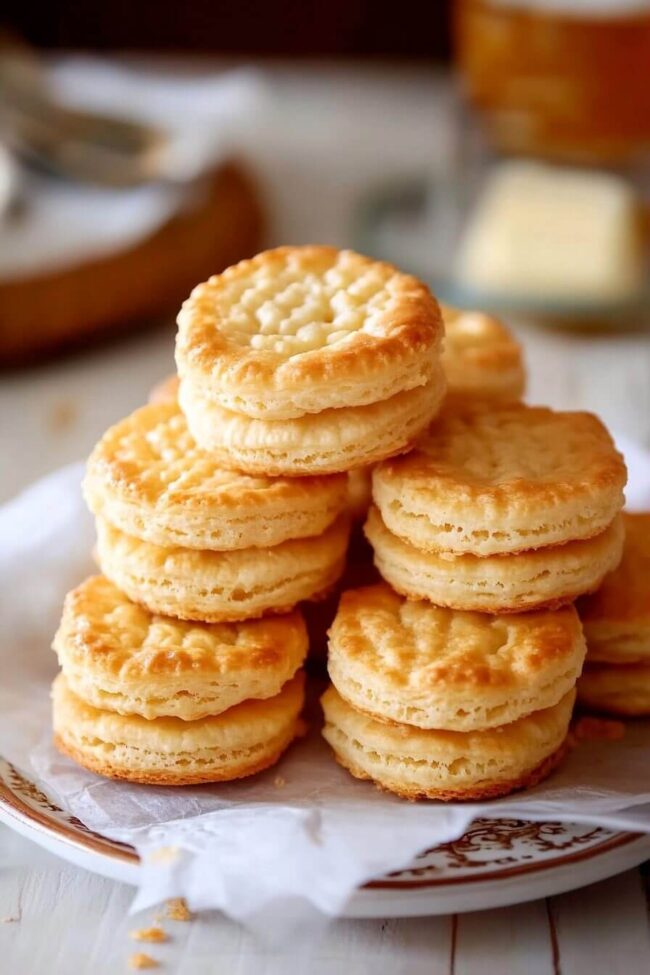
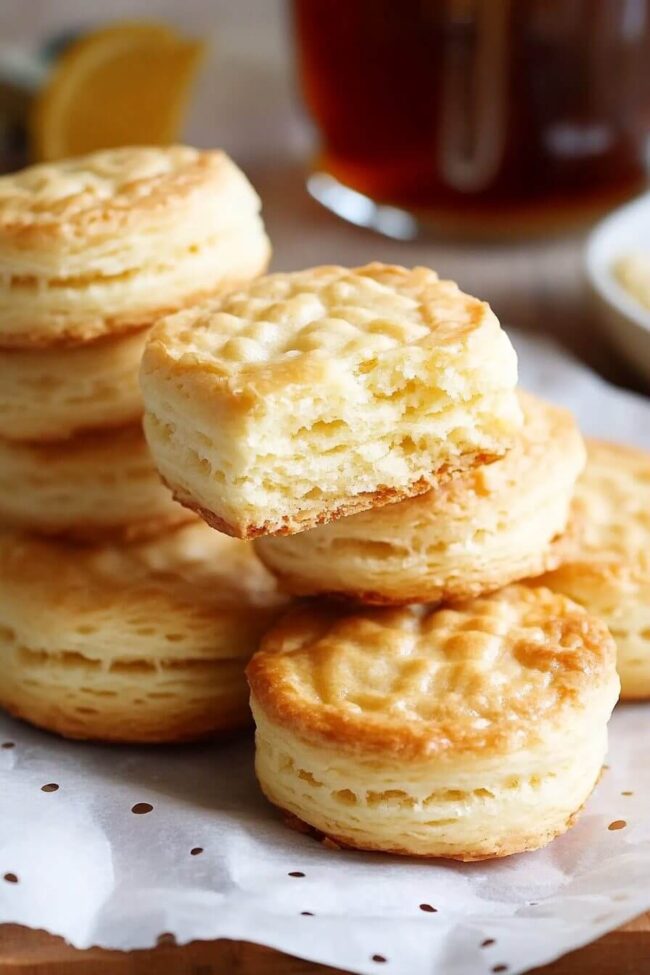
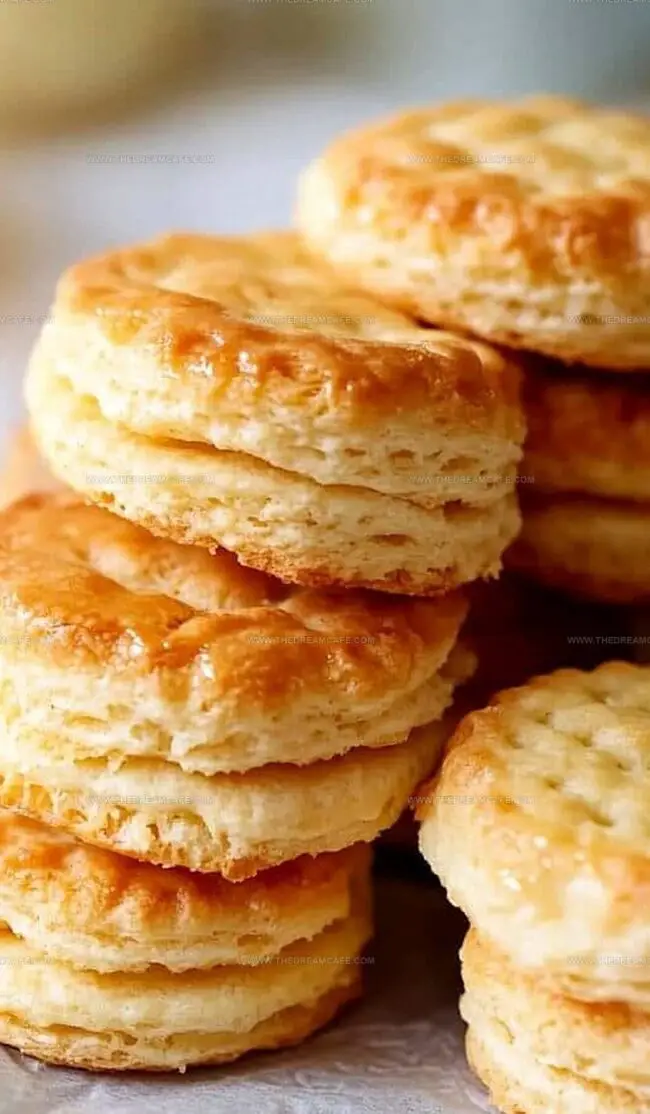
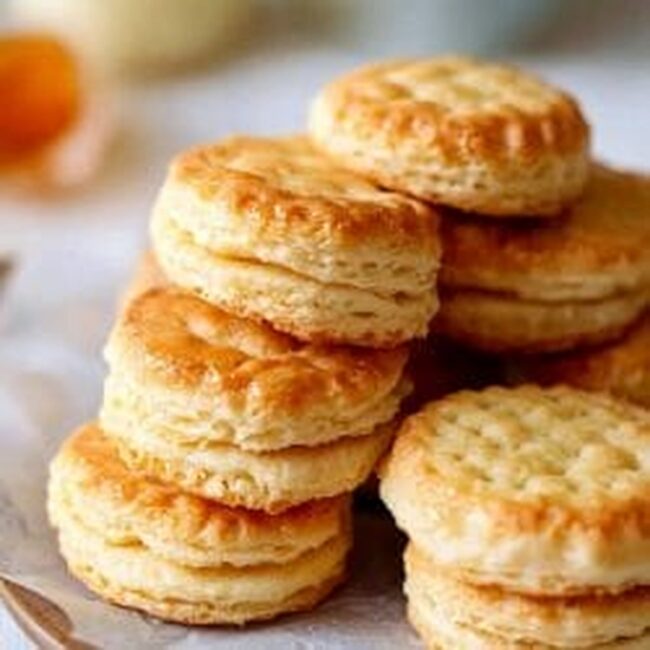
Julian Park
Co-Founder, Cuisine Researcher & Food Culture Writer
Expertise
Education
The Institute of Culinary Education (ICE), Los Angeles, CA
Julian Park is a natural storyteller at The Dream Café who blends hands-on culinary experience with a passion for exploring global food traditions. A graduate of The Institute of Culinary Education in Los Angeles, Julian combines professional technique with a love for cultural discovery, diving into how dishes reflect heritage, migration, and identity.
His work spans everything from in-depth cuisine guides to reflections on everyday meals around the world. With a curious palate and a journal always close by, Julian helps readers connect with food in a way that feels so insightful and personal.